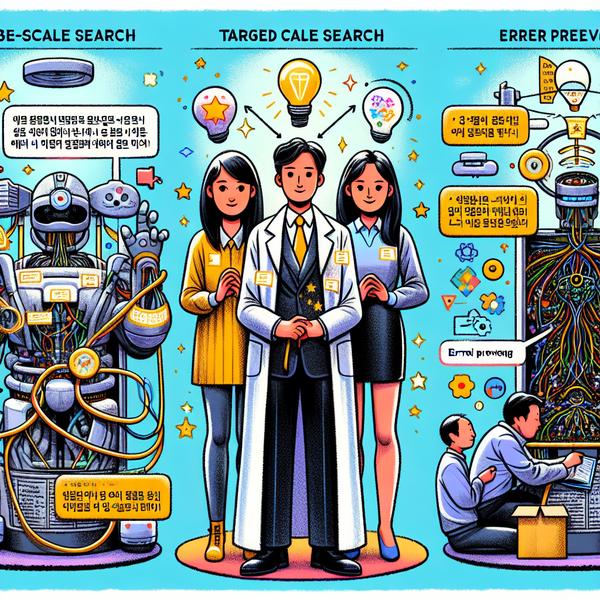
Google recently unveiled a groundbreaking advancement in AI with the launch of MLE-STAR (Machine Learning Engineering via Search and Targeted Refinement), a sophisticated agent designed to streamline and optimize machine learning engineering processes. Unlike traditional systems, MLE-STAR employs web-scale search, targeted code refinement, and error prevention modules to craft highly efficient ML pipelines. This innovative approach enables MLE-STAR to outpace rival ML agents and even seasoned human experts in competitive benchmarks by delivering results that are both precise and scalable. Through features like robust debugging and the use of novel ensembling strategies, MLE-STAR sets a new standard in automation for AI development.
1. What Makes MLE-STAR Revolutionary?
- MLE-STAR utilizes external search capabilities, allowing it to pull the latest state-of-the-art models and algorithms directly from a vast online database. Consider it like having a friend who’s always up-to-date on fashion trends, but for machine learning models. This ensures solutions are not limited to outdated techniques, offering cutting-edge performance at every step.
- The system doesn’t rely solely on its internal memories, like some agents that stubbornly cling to familiar tools (e.g., scikit-learn for all scenarios). Instead, it dynamically expands its knowledge, ensuring new advancements are seamlessly integrated during execution.
- Furthermore, its deep error-checking mechanism prevents common mistakes, such as data leakage or misuse of validation sets, which could lead to flawed results. Imagine having a built-in teacher correcting your homework before submission—this level of scrutiny is one of the cornerstones of MLE-STAR’s effectiveness.
2. Two-Loops for Better Engineering: Ablation and Exploration
- MLE-STAR employs a structured two-step refinement process for pipeline optimization. Picture this—when making a cake, initially, you might figure out if the texture is better with butter or oil through an "outer loop." This corresponds to MLE-STAR’s ablation studies, which identify the most impactful part of the ML pipeline to focus on.
- Once the key component is identified, like deciding it’s the frosting that truly elevates a cake’s flavor, the “inner loop” begins. Here, MLE-STAR dives deeper into that specific aspect, rigorously testing mini variations. For instance, if feature encoding is the focal point, it might test numerous encoding techniques to see which performs best.
- This iterative approach ensures that the generated pipeline isn’t just optimized as a whole but is fine-tuned in every significant detail.
3. Adaptive Ensemble Methods: A Winning Team
- Most conventional ensembling strategies boil down to either picking the best performance or averaging several options. Imagine going to a restaurant and finding a dish by just picking what's ranked first on the menu. Simple, right? But MLE-STAR goes beyond this simplicity.
- The agent explores advanced strategies, like stacking models with meta-learners or using optimized weight searching techniques. It's like taking the best dishes and figuring out how to combine them—for instance, adding chili sauce from one dish to a separate pasta for a fusion experience.
- This smarter and more thorough combination of strategies ensures that the final model leverages the strengths of multiple pipelines, creating a robust output that consistently outperforms standalone options.
4. Specialized Agents for Error-Proof AI
- MLE-STAR comes with a suite of built-in agents, each with a specific role in ensuring precision and reliability. The Debugging Agent acts like a vigilant watchdog—it spots and fixes errors in the code automatically. For example, if a script fails due to a Python traceback, this agent will work through trial and error to ensure the code runs smoothly.
- The Data Leakage Checker serves as a critical thinker, safeguarding pipelines from cleverly but mistakenly using test data in training, which can inflate results artificially. Think of it as a referee ensuring fair play.
- Moreover, the Data Usage Checker guarantees that every provided dataset is used to its full extent. It’s like opening all possible presents during a birthday party to maximize the excitement and learning!
5. Real-World Validation: Beating the Competition
- Performance is where MLE-STAR truly shines. In testing scenarios like Kaggle competitions, it achieved an impressive 63.6% "any medal" rate, which is more than double its closest competitor.
- Its modern model selection (e.g., choosing EfficientNet or Vision Transformers for image tasks) directly contributes to higher podium finishes. Imagine if a sprinter knew exactly which shoes gave them peak performance for every track they ran—it’s that level of tailored excellence.
- This competitive success is heavily backed by MLE-STAR’s ability to adapt and innovate, leveraging its ensemble strategies and continuous refinement process to stay ahead in tasks involving text, images, and audio.
- Additionally, Google has made MLE-STAR extensible, meaning human engineers can contribute and expand its capabilities, ensuring it stays relevant as AI tools continue to evolve.
Conclusion
MLE-STAR is not just another machine learning agent; it’s a paradigm shift in how AI engineering is approached. By combining innovative web search-guided solutions, a scientifically driven refinement process, ensemble strategies, and specialized debugging agents, it sets a gold standard in automation and reliability. Whether you’re building text models or optimizing pipelines for images, MLE-STAR optimizes every parameter for unmatched performance. Thanks to its extensibility and open-source core, it’s also a tool that evolves alongside the latest in technological advancements. With its ability to outthink and outpace competitors—and even human experts—it’s clear that MLE-STAR isn’t just built for today’s problems but designed for tomorrow’s possibilities.